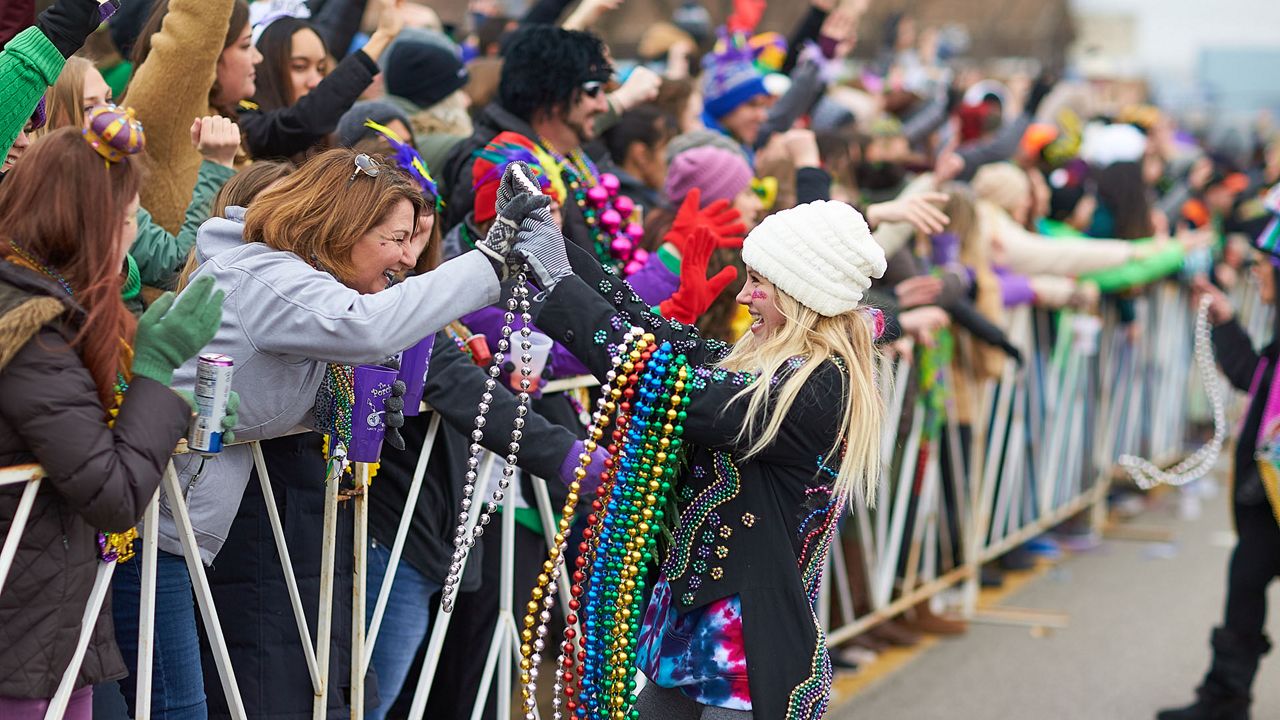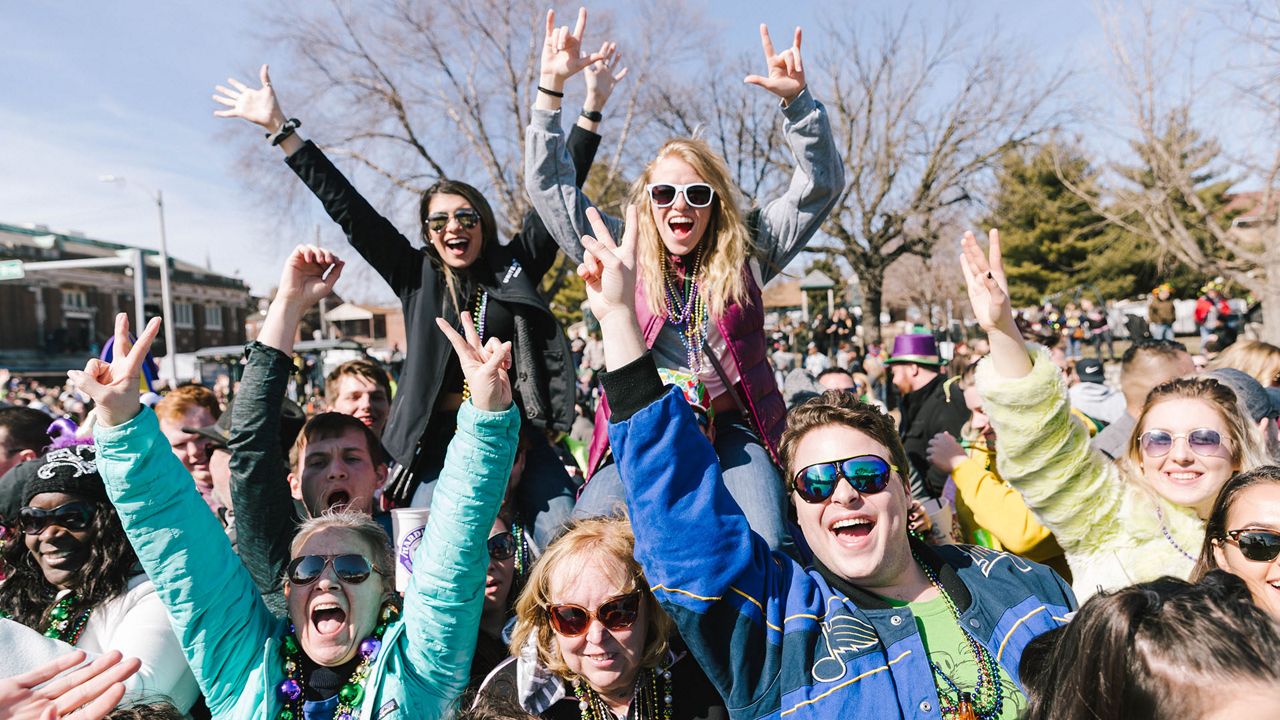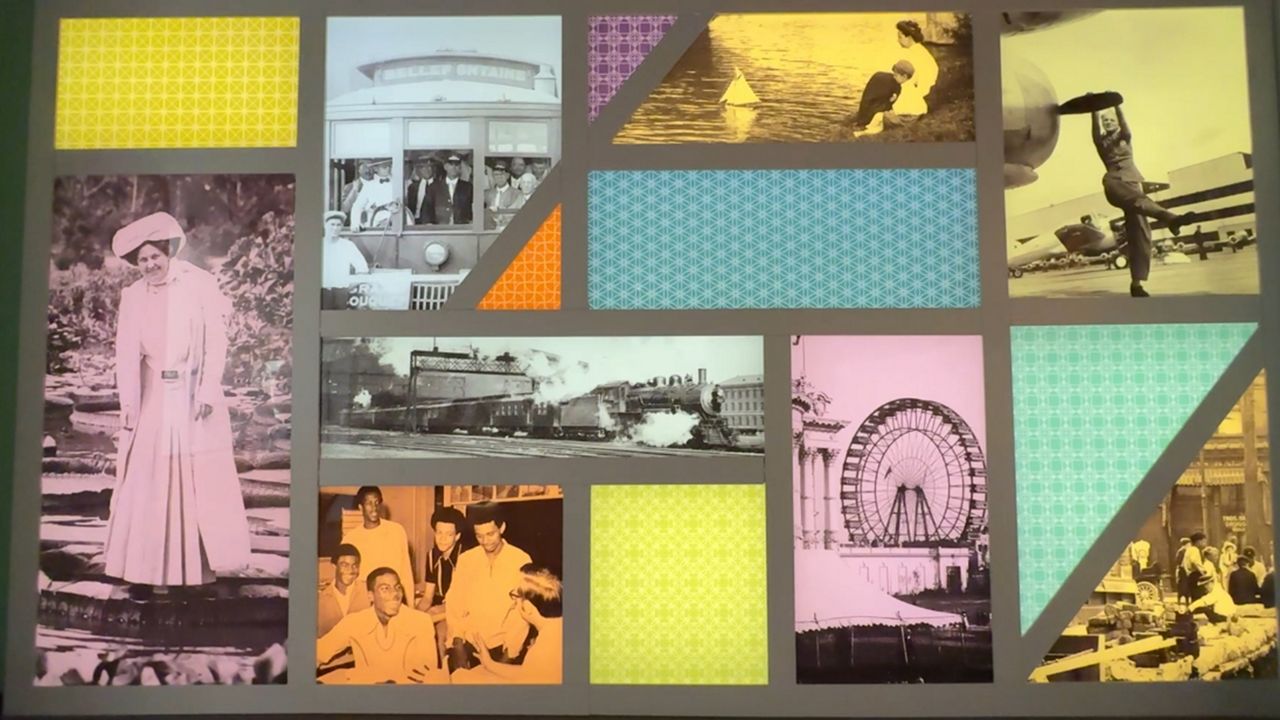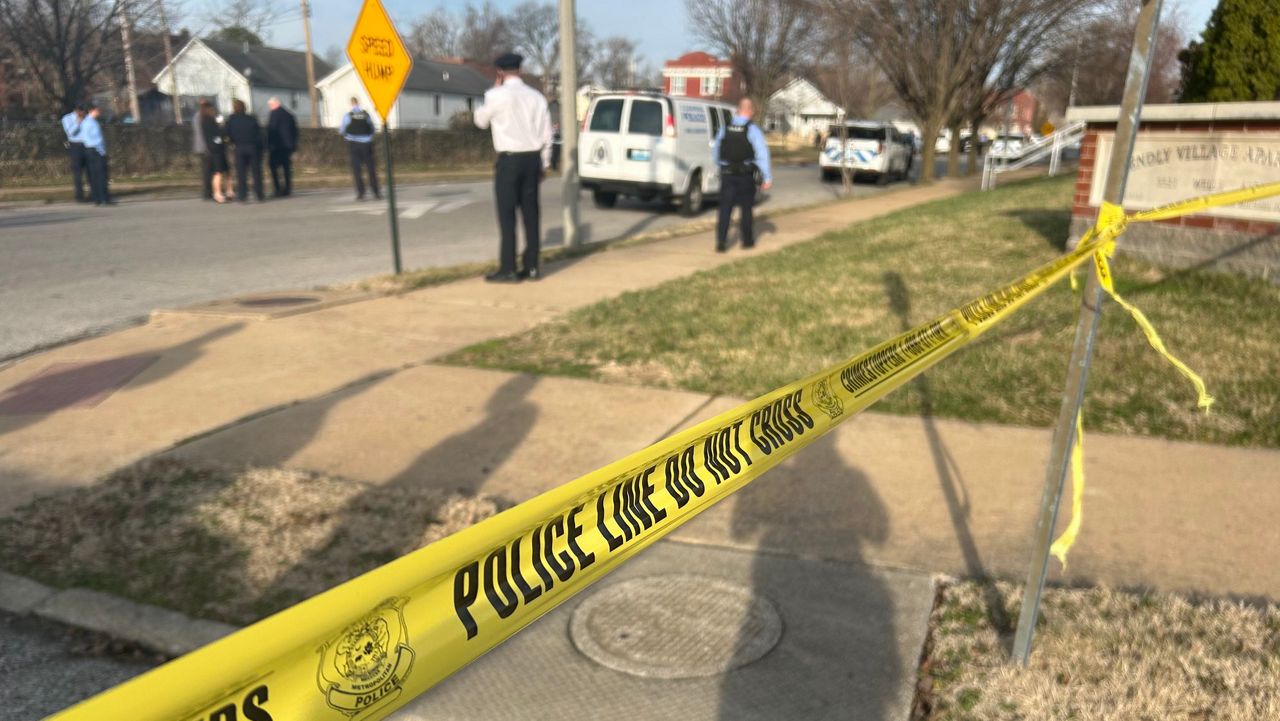ST. LOUIS — About 17 million beads are distributed to the large crowds during the popular Mardi Gras Bud Light Grand Parade in Soulard that takes place this Saturday.
That’s according to Mack Bradley, president of the Mardi Gras Foundation, who said celebrating Mardi Gras in St. Louis did not start because of the city’s French heritage, but rather five friends who wanted something to do after a snowstorm in February 1980.
“These guys are meeting, and they decided it was a terrible winter and wanted to have a party,” Bradley said.
The friends agreed to each pitch in $200 and invite people for a party with the Mardi Gras theme since it was close to that time of the year, according to Bradley. One of the friends, Hilary Clements, had just bought a building in Soulard where the party was held.
With the Mardi Gras Grand Parade now being miles long with elaborate floats, the first “grand parade” was less than three blocks long, consisting of party goers who wanted to drink at a nearby bar.
“It had snowed that day and into the evening, and so there was snow all over the sidewalks and streets. One of them had a pickup truck with a blade on the front of it, so they decided they were going to march from Hilary’s building up the street, which is about 2.5 blocks, to McGurk’s,” Bradley said.
“This guy drove his pickup truck and cleared a path west on Russell Boulevard for those two and a half blocks and they all walked behind him and went to McGurk’s and got thrown out for being too loud.”
Since the party was a success and everyone had a good time, Bradley said the decision was made to do it again the next year.

Over the years, Mari Gras became a large community event in Soulard, according to Bradley, and thanks to unseasonably warm weather for three years in the mid-90s on Grand Parade days, the event “exploded.”
“It went from being this super large neighborhood event to a legitimate regional event that drew people from all over St. Louis,” Bradley said. “And it became too big to run the parade through the neighborhood.”
To help organize and run the parade, as well as other events that begin in early January, nonprofits Mardi Gras, Inc., and the Mardi Gras Foundation were formed during the summer of 1999.
“I always felt like Mardi Gras gives Soulard sort of a vibe that other neighborhoods don’t have. They’ve got their own vibe, but this was just a little something extra that Soulard had, so I thought it was great for the neighborhood and I think it’s great for St. Louis,” Bradley said.
With living in Soulard for years, Bradley said he jumped on board with the Mardi Gras Foundation from the start, as well as became a volunteer to help put on the Grand Parade.
“It takes hundreds of volunteers to put this on,” Bradley said. “These are just awesome people and the only time I see many of them is during Mardi Gras.”
Some of the volunteers are the crews who create the parade floats, which can take months to develop, where people will deck out in costumes and performances. This year, the parade will have more than 80 entries that will fit the theme, “That’s Entertainment.”
“It’s amazing what these folks do and I have a lot of respect for it because I have no talent,” Bradley said.
To date, Mardi Gras in St. Louis generates about $20 million for the local economy every year, according to Bradley, which is equivalent to what St. Louis makes from a World Series event.
He added that research showed about 25% of visitors on parade day are people who live outside the area.
“Those are people who live as far away as Maine and California who come to St. Louis, Missouri, in February for an outdoor festival, so we will not debate their wisdom, but that’s what happens,” Bradley said.
The Grand Parade is by the far the biggest event, he said, but the organization’s other ticketed events such as the Mayor’s Ball this year have either been record breaking or close to record breaking.
Proceeds from the Mayor’s Ball go toward community improvement grants in Soulard to fund projects as a thank you for hosting Mardi Gras for the past 44 years.
With having to still follow pandemic protocols last year, Bradley said he feels people are ready to get out of the house and participate in activities again this year.









